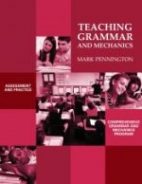How to Teach the Writing Domains (Genres)
Students need to understand the natures and peculiarities of the many different forms of writing. As students are first exposed to the imaginative/narrative domain (genre) of writing via story books, movies, and storytelling, they tend to organize all writing with a beginning, middle, and an end. While certainly appropriate for many forms of writing such as stories and letters, these forms cannot be applied to expository tasks such as essays or reports.
Teaching the P.A.W.S. writing model can help students understand the characteristics and components of the different domains of writing (genres) and their respective forms. P.A.W.S. stands for purpose, audience, writing organization, and subject. These are key elements of what is known as rhetorical stance. Knowing this information will help developing writers “play by the rules of the game” for each form of writing and also improve writing coherency. Additionally, students become better readers as they understand the purpose of the text and its intended audience. Knowing the organization of the writing and the manner in which the author chooses to develop the subject of that writing will boost reading comprehension, writing unity, and retention. Truly, there is a reading-writing connection.
Start by telling students that every written work has a purpose, an intended audience, a subject, and a writing method of organization. You may wish to add on voice to your explanation by referencing the content of a related article, titled How to Develop Voice in Student Writing. For example, point out a magazine or newspaper advertisement. Brainstorm its purpose (to sell the product or service), its audience (who is the market), the writer’s organization (how the ad is presented to get the reader’s attention and, or course, the sale), and the subject (what exactly is being sold).
Inform students that there are two basic types of writing: expository and non-expository. The former is factually-based and attempts to understand, explain, or convince with the focus on an argument or a claim. The latter is fictional and attempts to entertain, tell a story, or describe with the focus on a controlling idea or topic.
Next, share that the expository domains (genres) of writing are practical or informative. Cite a few examples of their forms from the diagram and ask students to categorize them as being either practical or informative, in terms of purpose and design. Repeat with analytical and persuasive.
You may wish to have students read an example for each of the domains.
Then, explain that the non-expository domains (genres) of writing are sensory and descriptive. Again, reference the examples of the forms within this domain on the diagram and ask students to categorize them as being either sensory or descriptive, in terms of purpose and design. Repeat with imaginative and narrative. Again, you may wish to have students read an example for each of the domains.
*****

TEACHING ESSAYS BUNDLE
The author’s TEACHING ESSAYS BUNDLE includes the three printable and digital resources students need to master the CCSS W.1 argumentative and W.2 informational/explanatory essays. Each no-prep resource allows students to work at their own paces via mastery learning. How to Teach Essays includes 42 skill-based essay strategy worksheets (fillable PDFs and 62 Google slides), beginning with simple 3-word paragraphs and proceeding step-by-step to complex multi-paragraph essays. One skill builds upon another. The Essay Skills Worksheets include 97 worksheets (printables and 97 Google slides) to help teachers differentiate writing instruction with both remedial and advanced writing skills. The Eight Writing Process Essays (printables and 170 Google slides) each feature an on-demand diagnostic essay assessment, writing prompt with connected reading, brainstorming, graphic organizer, response, revision, and editing activities. Plus, each essay includes a detailed analytical (not holistic) rubric for assessment-based learning.



